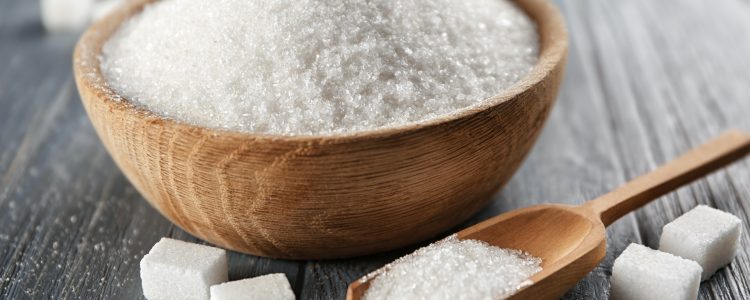SUGAR – some clarification

Sugar comes in many guises, but having some clarity on the terminology employed on food packaging should enable better informed choices when food shopping. So let’s take a closer look:
What does ‘low sugar’ mean?
To make this claim, the food product must have no more than 5 g of sugar per 100 g of the solid food in the pack, or if it’s a drink – no more than 2.5 g of sugar in 100 ml of liquid.
What does ‘sugar-free’ mean?
To make this claim the food must contain no more than 0.5 g of sugar per 100 g of solid food or drink.
What does ‘no added sugar’ mean?
This means that the manufacturer has not added mono or disaccharide (simple) sugars to the product, nor any other additive foods to achieve sweetness. Manufacturers sometimes use concentrated apple juice or fructose corn syrup. But this does not mean the product is necessarily without its own naturally present sweetness. However, where a food IS naturally sweet, this should be stipulated and say ‘contains naturally occurring sugars’.
What does ‘unsweetened’ mean?
This is similar to the one above and again means that neither a ‘food’ sweetener, nor an ‘additive’ sweetener (natural or artificial), has been added to the product. So these are the safest claims to look for.
Beware the so-called ‘non-caloric sweeteners’ that some food manufacturers are adding to their products, especially so called ‘diet’ products. This is an attempt to circumnavigate the growing consumer awareness that sugar in processed foods come with a health price tag. So their aim is that if you can’t metabolise or absorb their sweetener, you aren’t gaining any calories from it. You can understand their dilemma, they know that consumers enjoy sweet flavours, but people are starting to get a handle on how much sugar they’re eating! The World Health Organisation and Public Health England advise that sugar consumption should not exceed 50 g per day, or 10% of a single day’s calories. This seems quite reasonable, and you probably think who eats 50 g (which is 10 teaspoons) of sugar per day anyway? – well let’s take a look at a popular breakfast cereal, one that many would categorise as ‘healthy’.
For a ‘real-life’ example – Jordan’s ‘Country Crisp’ is – and I quote – a ‘wholesome, natural breakfast cereal’, ‘high in fibre’, with sun-ripe strawberries, nothing artificial, and no added salt. The nutritional information states that 100 g of the product will contain 20.8 g of sugar, but they claim a portion to be just 50 g, meaning their portion has 9.4 g sugar. However, when you weigh out a 50 g portion, it is such a small amount, I think a 100 g serving is actually more typical of the amount one might expect to eat for breakfast.
If you start the day with a 100g portion of this cereal, (or similar), you will consume nearly half your day’s allowance of sugar, and if you add to that a 200 ml glass of orange juice, you will have consumed another 20 g of sugar – albeit of a natural, ‘no added sugar’ variety – making your breakfast a total whopping 40 g of sugar. Your resulting blood glucose ‘high’ will soon after induce a corresponding blood glucose dip, with cravings for something restorative and sweet with your morning coffee. Whereas a bowl of porridge with a few nuts, will digest more slowly, producing a steady, moderate release of glucose throughout the morning, meaning mid-morning snacks can be consigned to history.
So are Non-caloric Artificial Sweeteners the answer?
To understand why I strongly advise you to steer clear of these strongly marketed alternatives, click on the link and read an article I wrote a couple of years ago on the ‘sheep in wolves clothing’ http://bit.ly/2yv5JF7 For examples of healthier natural alternatives to table sugar, read more here: http://bit.ly/1HpssxB
